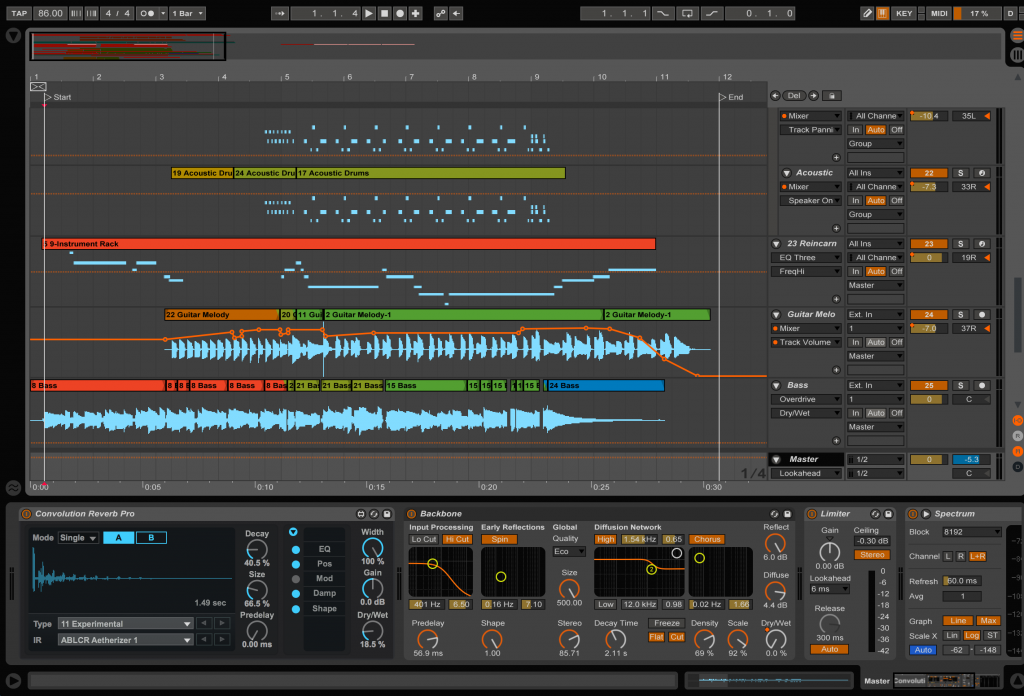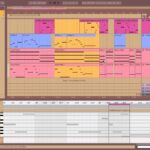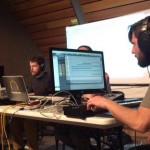
If you’d rather listen to this article than read it, check out Episode 17 of the Charlie’s Music Production Lessons podcast.
This week I’ve been working on a 30-second track for a contest hosted by UniqueSound. A music supervisor at the ad agency TBWA will be taking a listen to each entry, and one person will win $200. The challenge is basically to write music that could be used in a commercial, with the following style guidelines: indie pop, dreamy, electro, and ambient. Oh, and the track also has to start “mind-blowing” and have an “emotional explosion” ending. Since there was no video element to this challenge, I just had to picture blobs of brain and heart flying everywhere to capture the feelings they suggested.
(UPDATE: I got 2nd place in the contest!)
Since my track is only 30 seconds, I’ll play you the full mix, then break it down into its layers.
[audio:https://www.charliemccarron.com/mediaftp/dreamysynthpop/charlie-mccarron-dreamy-synth-pop-v4.mp3]As you can hear, the track is fairly dense, with 9 guitar layers, 8 percussion layers, 4 synth layers, and a bass layer. My process involved a lot of iterating. I’d often record a part that I thought should be prominent in the mix, but when I listened back, I’d decide to either scrap it or lower it in the mix. My initial guitar idea did make it through to the end, although it gets a little drowned by the other guitars I added. With a little fancy fading, you’ll hear the initial guitar idea spotlighted for a moment.
[audio:https://www.charliemccarron.com/mediaftp/dreamysynthpop/01-guitar.mp3]As with most of my guitar layers, I recorded these parts twice and panned them left and right. I’ve heard conflicting thoughts on this strategy. Some people say it wastes precious frequency space by doubling the same part. But I tend to like the unique stereo image it creates.
[audio:https://www.charliemccarron.com/mediaftp/dreamysynthpop/02-guitar-stereo.mp3]Next, I added a few percussion parts. It’s sometimes tricky to add cowbell, because it can stick out like a sore thumb, but in this situation, it seemed to work in the mix.
[audio:https://www.charliemccarron.com/mediaftp/dreamysynthpop/03-percussion.mp3]I should mention that I have a very rhythmic reverb on the master track, which is most obvious in the percussion layers. Here’s the dry version:
[audio:https://www.charliemccarron.com/mediaftp/dreamysynthpop/04-percussion-dry.mp3]Here’s the wet version:
[audio:https://www.charliemccarron.com/mediaftp/dreamysynthpop/05-percussion-wet.mp3]I added some synth pads to reinforce the chords in the guitar part. I used sidechain compression to create a pulse.
[audio:https://www.charliemccarron.com/mediaftp/dreamysynthpop/06-synth-pads.mp3]I have a whole production lesson explaining the sidechain compression technique, just look for episode six on my production lessons podcast.
No indie pop track would be complete without a bass part. To me, adding a bass part is like frosting a cake. It makes the whole track way more cohesive and delicious. As a test, here’s a bit of the track without the bass, then the bass will fade in:
[audio:https://www.charliemccarron.com/mediaftp/dreamysynthpop/07-mix-minus-bass.mp3]I decided to make the bass slightly more distorted partway through the track. Here’s what it sounds like by itself.
[audio:https://www.charliemccarron.com/mediaftp/dreamysynthpop/08-bass-distortion.mp3]I added a few different strummed guitar parts, just strumming one Major chord throughout the whole track. The first is fairly laid back rhythmically.
[audio:https://www.charliemccarron.com/mediaftp/dreamysynthpop/09-guitar-strum-1.mp3]Next, I created a guitar part for the second half that felt like it was double the tempo of the first strummed guitar.
[audio:https://www.charliemccarron.com/mediaftp/dreamysynthpop/10-guitar-strum-2.mp3]I realized piling these similar layers on top of each other might be a waste of aural space. What I really needed out of the second, more intense layer was the rhythmic hits. So I decided to record a layer of muted strums, which work more like a percussion layer than a guitar layer.
[audio:https://www.charliemccarron.com/mediaftp/dreamysynthpop/11-guitar-strum-muted.mp3]As a side note – if it sounds like the bass and electric guitar are clashing by overlapping the same frequency range, I might take out some low end in the electric guitar and take out some high end in the bass. I did that in this track, and it seemed to clean up the mix quite a bit.
Next, it was time to add some melody parts. I think for commercial music, adding a melody is one of the hardest things to do, because you don’t want the melody to stand out too much. I especially have trouble finding synth sounds that work well as melody parts. On the one hand, you don’t want to make the synth so crazy that it draws extra attention to itself, but on the other hand, if it’s too bland it might also draw attention to itself by feeling too low key.
In my track, I ended up using a synth lead that had a lot of character, but not too much high-end.
[audio:https://www.charliemccarron.com/mediaftp/dreamysynthpop/12-synth-lead.mp3]In one of my iterations, I also added another synth part, but after taking a break and coming back to it, I realized it was way too attention grabbing. Here’s what it sounded like.
[audio:https://www.charliemccarron.com/mediaftp/dreamysynthpop/13-synth-discarded.mp3]I decided to cut that synth, and replace it with a minimal guitar part.
[audio:https://www.charliemccarron.com/mediaftp/dreamysynthpop/14-guitar-minimal.mp3]After I was fairly satisfied with the mix, I sent it off to my friend Tyler Tholl for feedback. He’s an excellent producer, who you might remember from Composer Quest episode 87. He had one idea for my track, which was to add an acoustic drum kit to enhance the energy shift around 10 seconds in. He mentioned that’s something they would often do at the commercial music studio he worked at. So I gave it a shot, and tried adding some acoustic drums. Since I wasn’t totally satisfied with one drum sound, I decided to use two different drum kits, panned left and right.
Drum kit 1:
[audio:https://www.charliemccarron.com/mediaftp/dreamysynthpop/15-drums-1.mp3]Drum kit 2:
[audio:https://www.charliemccarron.com/mediaftp/dreamysynthpop/16-drums-2.mp3]Here they are together:
[audio:https://www.charliemccarron.com/mediaftp/dreamysynthpop/17-drums-1-and-2.mp3]I’m guessing this technique would probably be frowned upon by professional music producers, but sometimes you just have to trust your ear.
I’m really curious to see how other composers approached this challenge. I’m not too hopeful about my odds, since I’m not sure if my track really qualifies as indie pop, dreamy, electro, AND ambient. But it was fun to make! Here’s the final mix one last time.
[audio:https://www.charliemccarron.com/mediaftp/dreamysynthpop/charlie-mccarron-dreamy-synth-pop-v4.mp3]You can find all of my production lessons on iTunes, Stitcher, or through your favorite podcast app. You can also download them directly here.
Thanks for stopping by!



